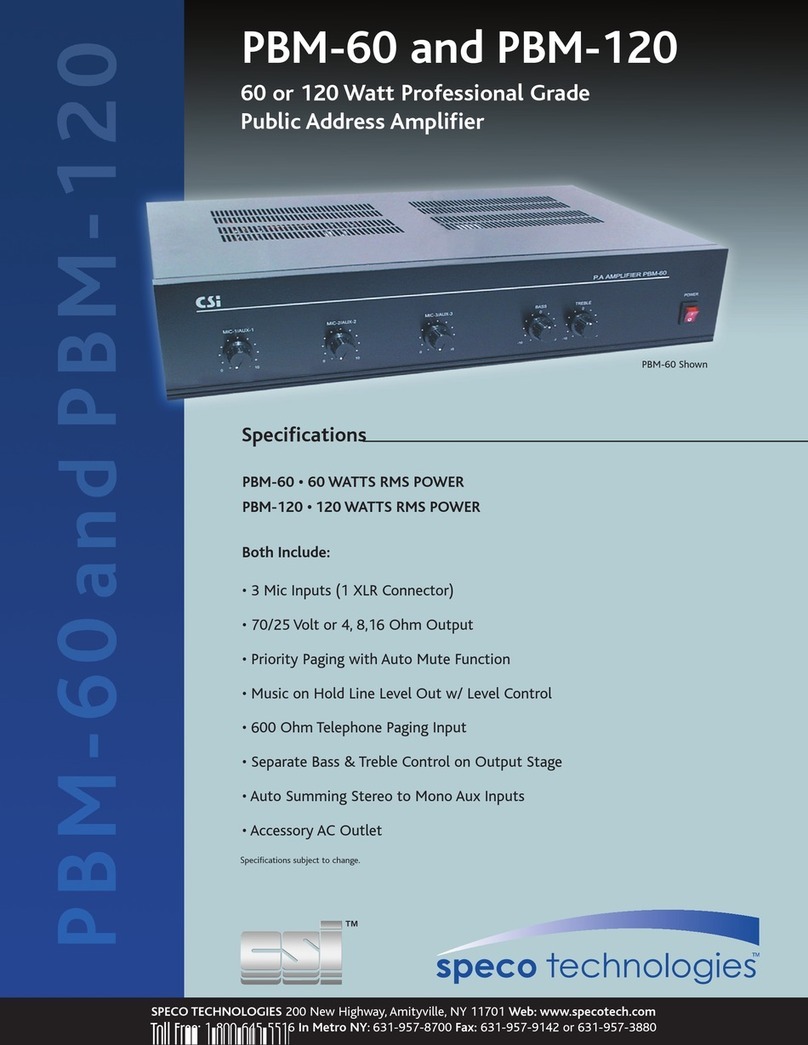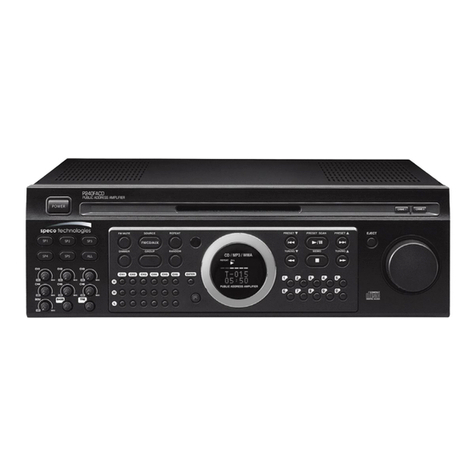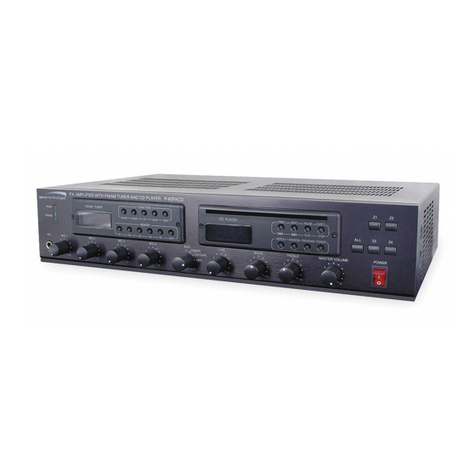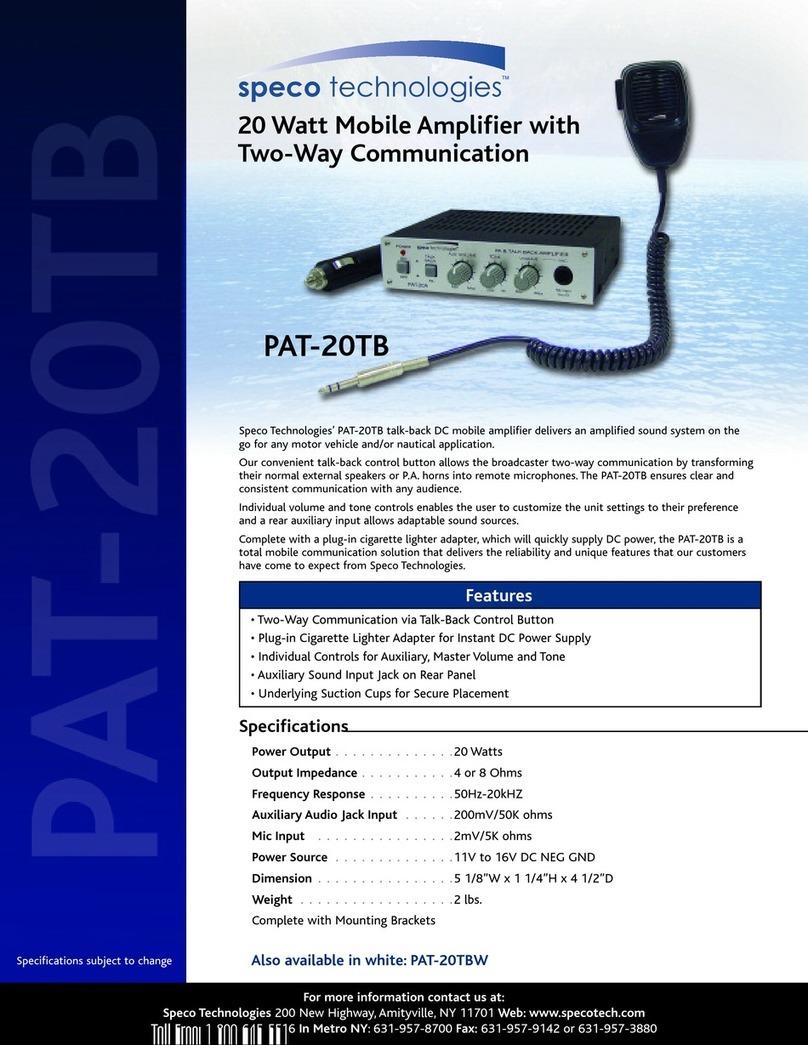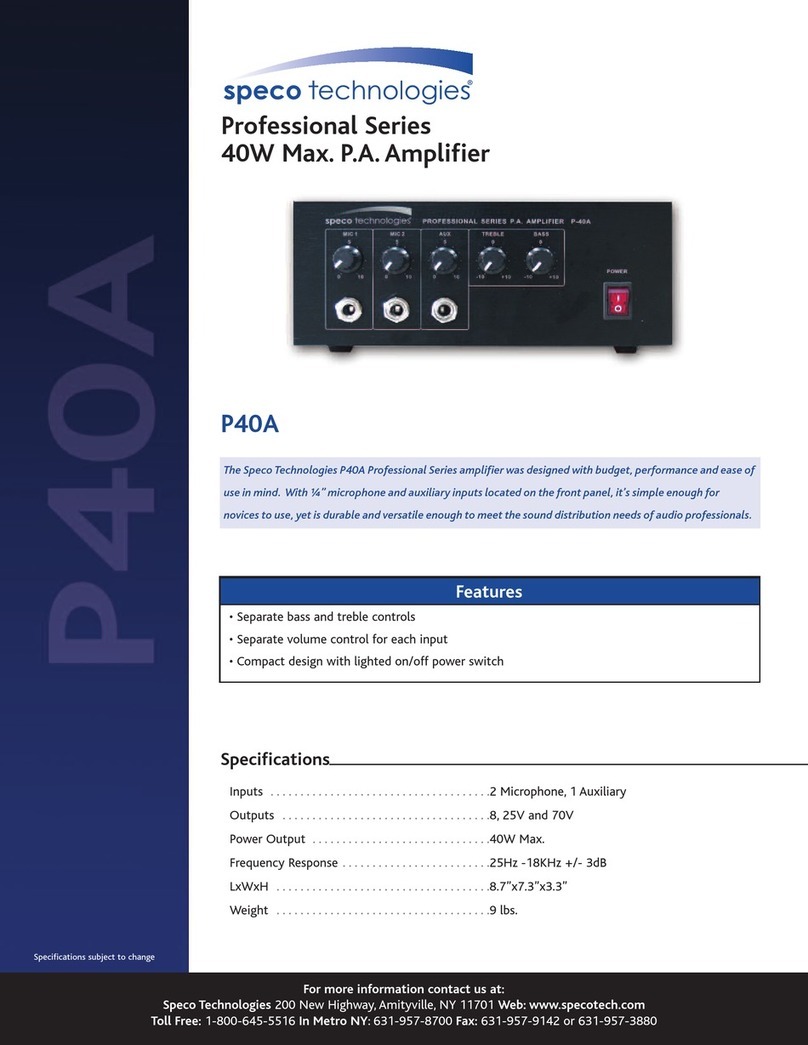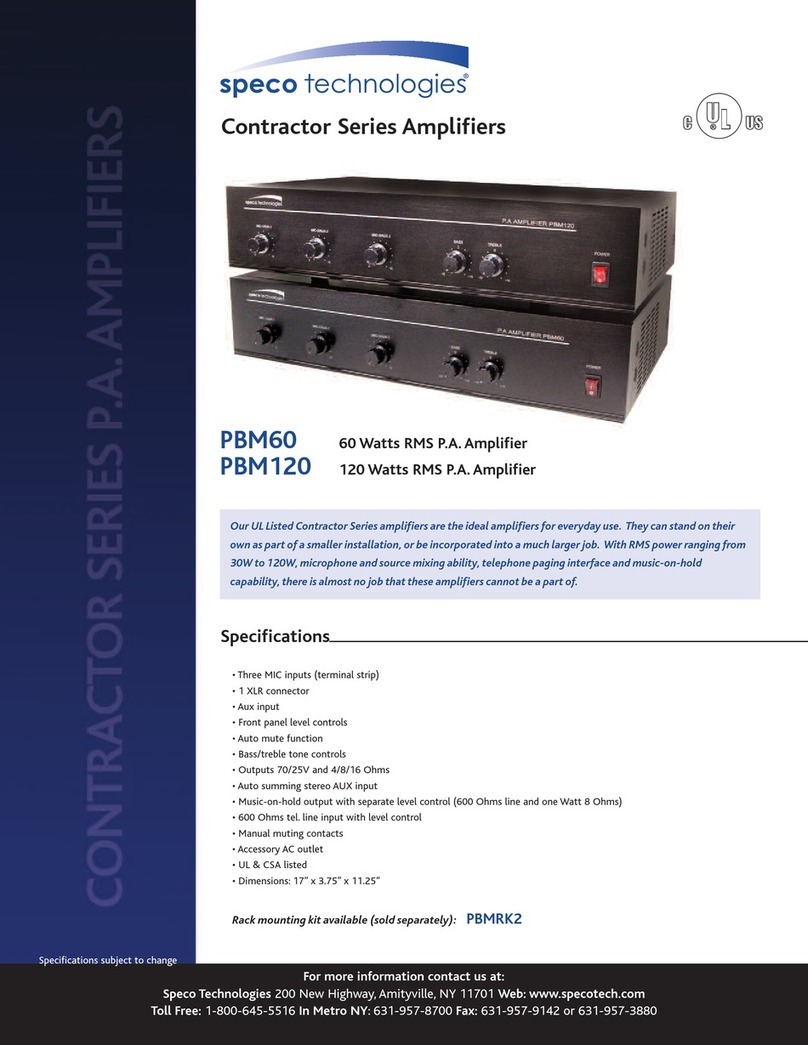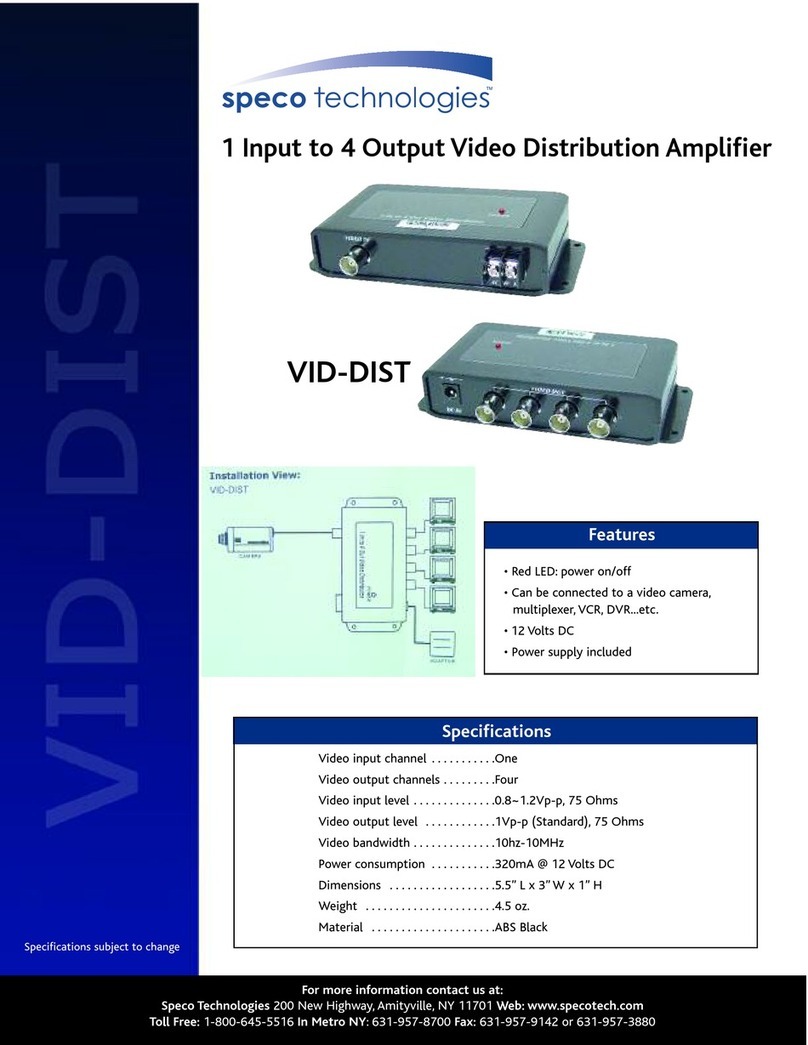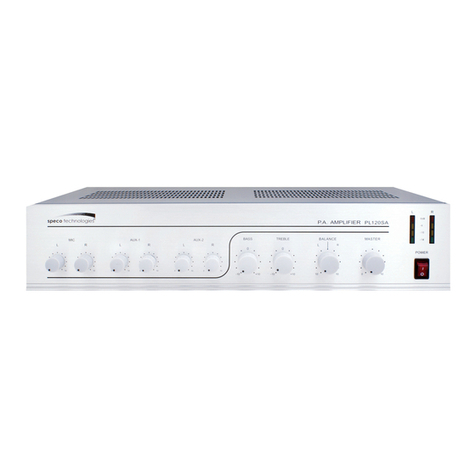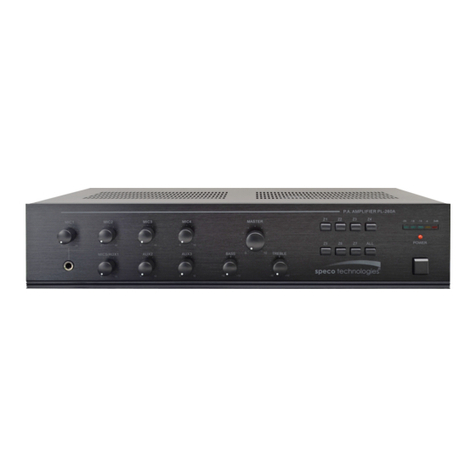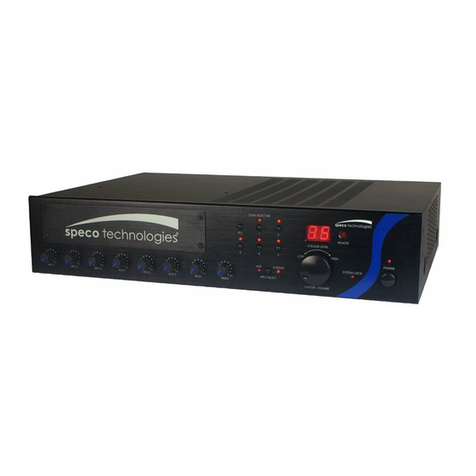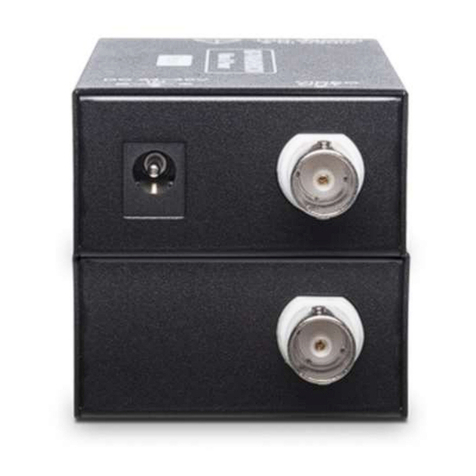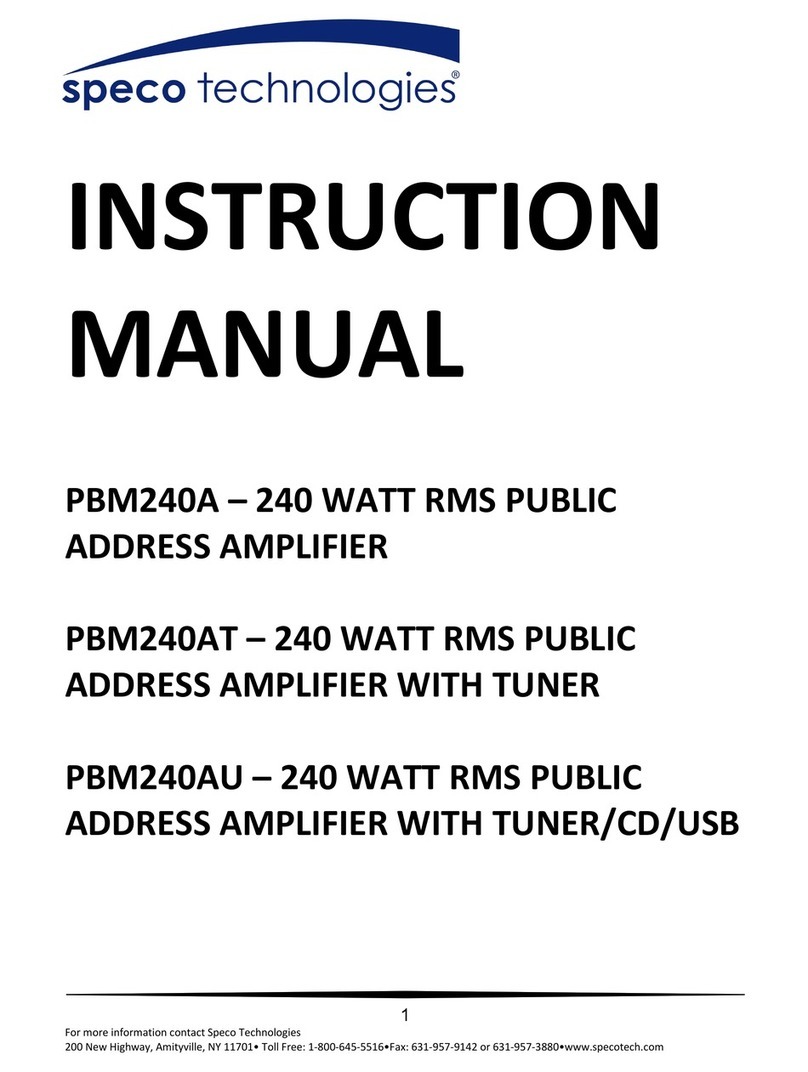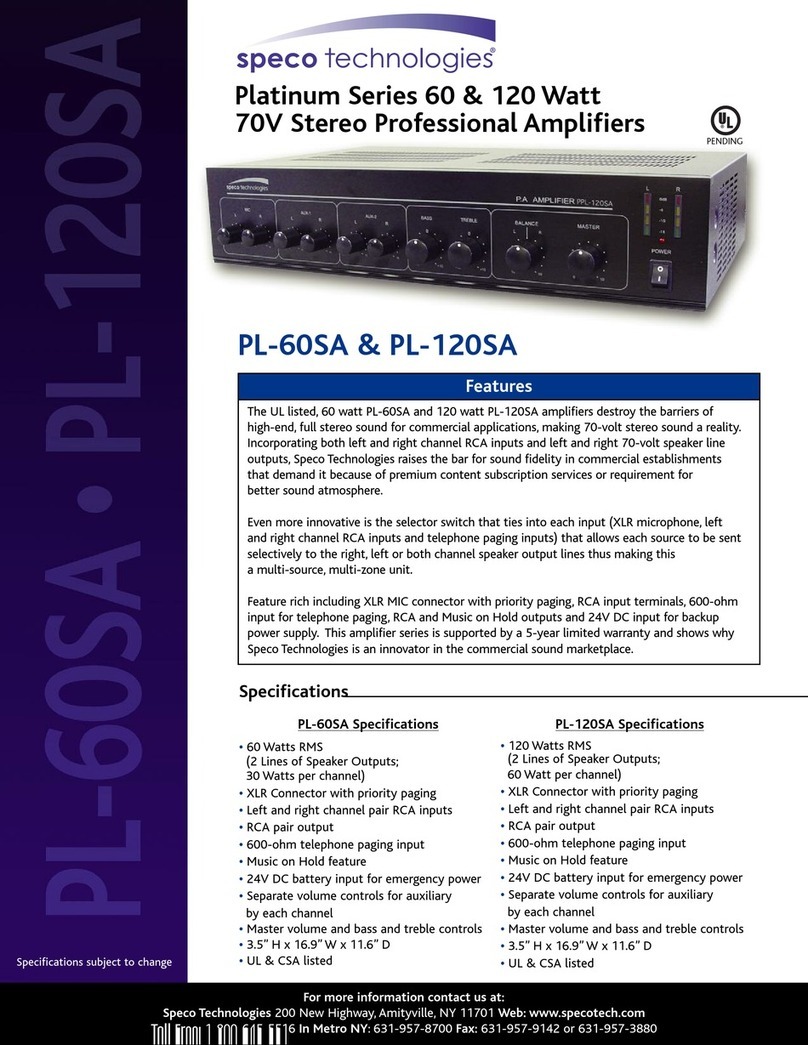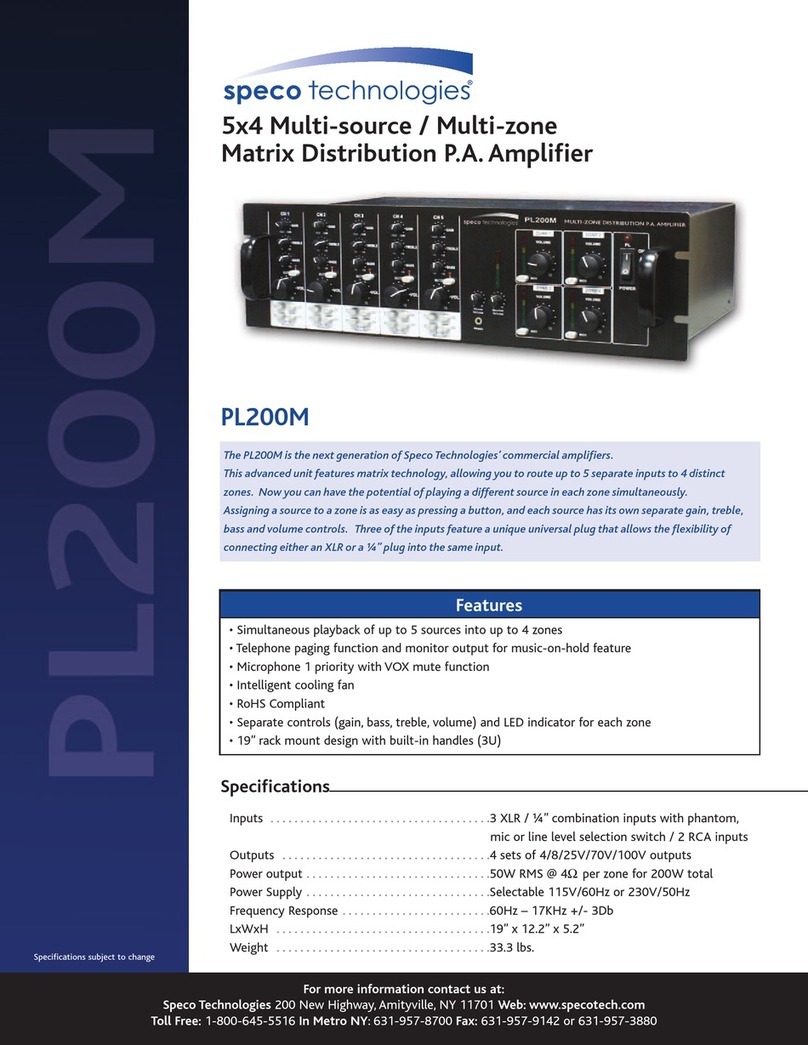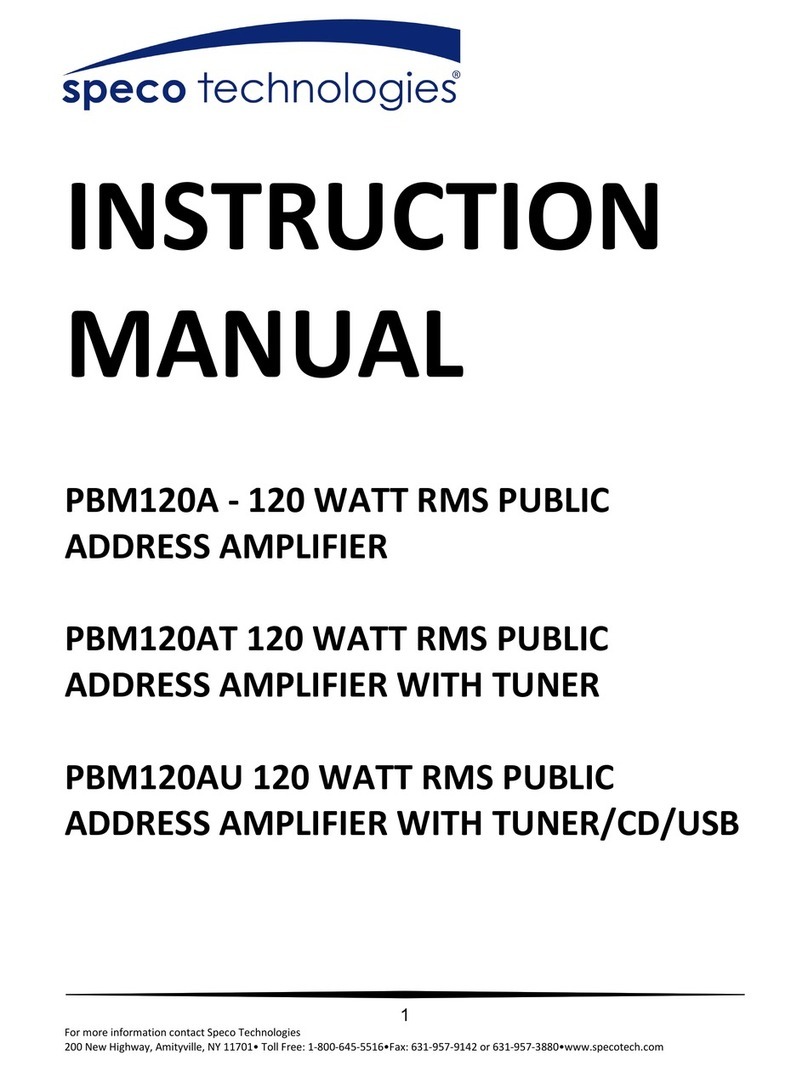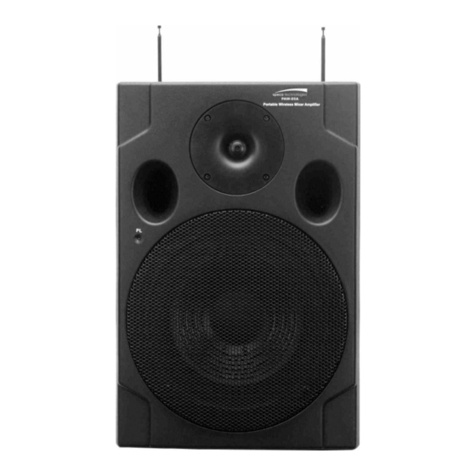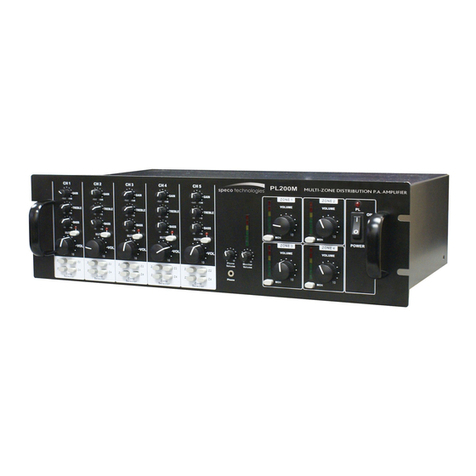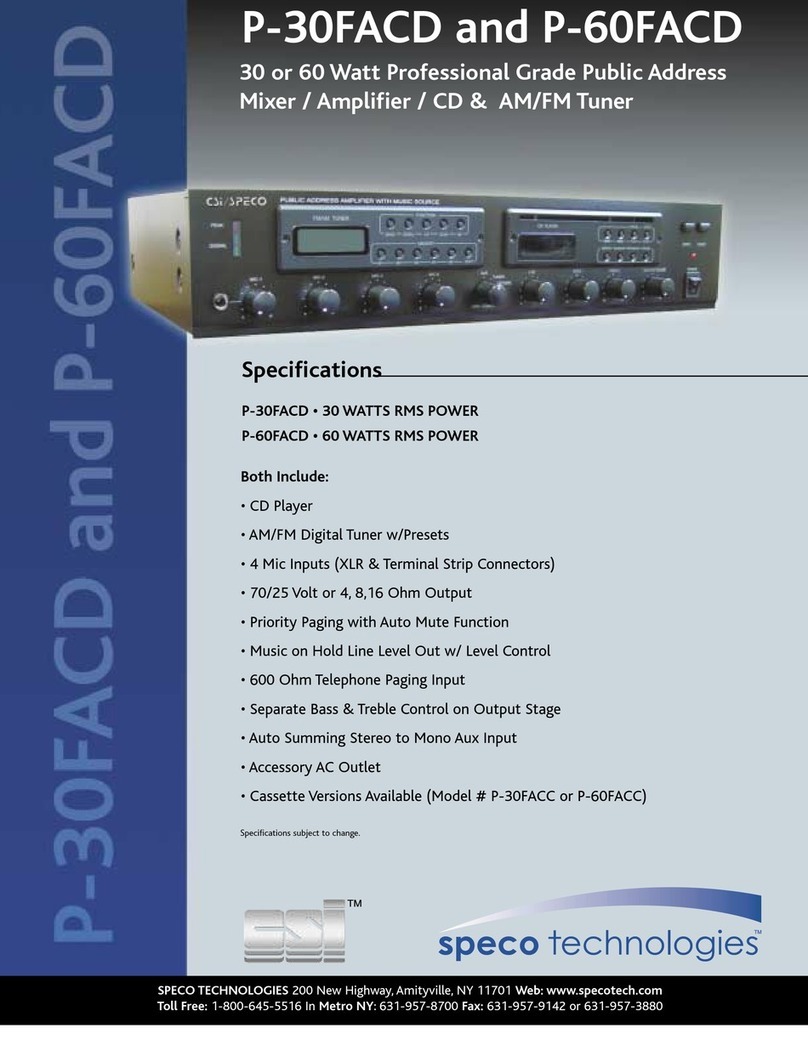Step 1: Fill out Wattage Tap Requirement Chart (to right)
determining the number of speakers that will
be used at each wattage tap for the amplifier.
Step 2: Multiple the number of speakers by each wattage
tap to determine Total Wattage Requirement per
Tap setting (See Ex A).
Step 3: Add all the figures in shaded area to determine
the total Wattage Requirement for the amplifier.
Step 4: Match total Wattage Requirement to the bottom
chart "Recommended Amplifier Wattage Chart"
to determine acceptable RMS Wattage your
amplifier should have.
Step 5: Repeat this process for each amplifier system
required.
Ex A) 5 X _____________ = _____________
60 X _____________ = _____________
30 X _____________ = _____________
20 X _____________ = _____________
15 X _____________ = _____________
10 X _____________ = _____________
7.5 X _____________ = _____________
5X_____________ = _____________
4X_____________ = _____________
3.75 X _____________ = _____________
2.5 X _____________ = _____________
2X_____________ = _____________
1.50 X _____________ = _____________
1.25 X _____________ = _____________
1.00 X _____________ = _____________
0.50 X _____________ = _____________
0.25 X _____________ = _____________
0.125 X _____________ = _____________
Total Sum of Shaded Area
Represents Total Wattage
Requirement _____________
Determining Your Amplifier Needs
for Sound Systems Total Wattage
Requirement per
Tap Setting
Number of
Speakers at
Set Tap
Set
Wattage
Taps
Wattage Tap Requirement Chart
Acceptable Amplifier RMS Wattage
15 Watt 30 Watt 60 Watt 120 Watt
If Sum Wattage Total is 12 Watts or Less X X X X
If Sum Wattage Total is between 13 and 24 Watts X* X X X
If Sum Wattage Total is between 25 and 48 Watts X* X* X X
If Sum Wattage Total is between 49 and 96 Watts X* X* X* X
If Sum Wattage Total is between 97 and 204 Watts X* X* X* X*
If Sum Wattage Total is between 205 and 216 Watts X* X* X*
If Sum Wattage Total is between 217 and 240 Watts X* X*
If Sum Wattage Total is between 241 and 288 Watts X*
* RMS Amplifier used in conjuction with Speco Technologies’ P-240A Power Booster Amp
Recommended Amplifier Wattage Chart
For more information contact us at:
Speco Technologies 200 New Highway, Amityville, NY 11701 Web: www.specotech.com
Toll Free: 1-800-645-5516 In Metro NY:631-957-8700 Fax: 631-957-9142 or 631-957-3880
10 50
